Illustration above; 2022 is the year of the "Wet Tiger".
America is not a happy country.
If the current power grid can't handle a night of 20 degree temperature without rolling blackouts, how will we plug 100 million electric cars into the grid?
Is there any country that tax their citizens and sends some of it to America? Imagine, if you will, a world where every tweet and meme must be fact checked but not a ballot. How to stop drunk drivers from killing sober drivers? Ban sober drivers from driving. That's exactly how gun control works. Can we still order black coffee? Are brownies being taken off the shelf? Is White Castle changing its name? I'm sure Cracker Barrel is screwed. Can we still play Chinese checkers? Is that season still called Indian summer? No more Italian sausages? How far do you want to go with this foolishness? The 'Payday' candy bar is changing its name since it's offensive to those who don't work. Hell of a job, Democrats! You've managed to bring back the 1918 pandemic, the 1929 depression, the 1968 race riots and the 1973 gas prices - all at the same time.
In this article, we will provide a global Sitrep concerning the state of the world at the conclusion of the Beijing Winter Olympics in February 2022. During this period, both Russia and China signed a very comprehensive agreement that defined a very detailed plan for global coorination and cooperation. And as I write this article, it is being implemented with great speed and gusto.
Here we will collect some articles, and misc brick-a-brack that will accumulatively (in total) provide a fine understanding of the global changes that are now occurring all over the planet. (Which, by the way, are NOT being reported on in the Western Media.)
Instead the Western media are reporting other things. Like this screen shot from the American “news” aggregator “DrudgeReport” 8FEB22.
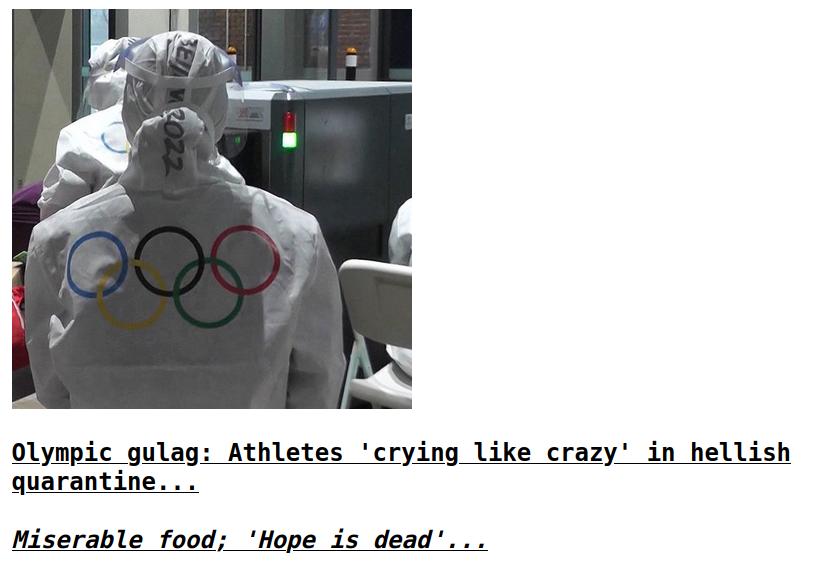
This article consists of related articles concerning various geographic regions thoughout the world. If you, the reader, think only in terms of your nation and may either Russia or China, you might this article collection to be a tad boring.
However, it covers a wade swatch of signifigant nation states. When you read the articles you will have a far better picture about what is going on in the world as the power-base shifts from a uni-polar world led by the United States to one that is multi-polar and not ruled at all.
We kick off this discussion with the United Nations.
[0] United Nations
"...demonizing china and russia at every turn and at such a scale, i was thinking the third war is imminent. now i know better, the entire world is against the empire. they abused propaganda and brainwashing tactics so much that only thing their adversaries need to do is just tell the truth." -demonize | Feb 8 2022 22:17 utc
Rules for the World
by Observer R for the Saker Blog
BACKGROUND
On February 4, 2022, on the occasion of the opening of the XXIV Olympic Winter Games in Beijing, the presidents of China and Russia issued a document entitled:
Joint Statement of the Russian Federation and the People’s Republic of China on the International Relations Entering a New Era and the Global Sustainable Development
This document sets a new level in the cooperation between the two countries in foreign policy and is their exposition of a common viewpoint for setting out the rules that the world should follow in politics among nations.
A key section up front contains the following:
“The sides call on all States… ...to protect the United Nations-driven international architecture and the international law-based world order, ...seek genuine multipolarity with the United Nations and its Security Council playing a central and coordinating role….”
The reliance on the United Nations (UN) as the major guiding rulemaker is an important point.
A major question concerning this reliance is the extent to which the design of the UN matches the current reality of the world distribution of wealth and power.
The UN was set up in 1945 according to a design that reflected the post-WWII distribution of economic output and advanced weapon systems.
Overall, it was based on the outcome of that war, with the winners getting the spoils and the losers getting the left-overs.
After some seventy-seven years, the situation has radically changed.
According to the CIA Fact Book,
China now has a larger economy than the US,
India is independent and has the third largest economy,
and India, Pakistan, Israel, and North Korea have become nuclear powers.
Japan and Germany each have larger populations and economies than either Britain or France.
And yet, the permanent members of the UN Security Council with veto rights are the same nations that were made members in 1945.
This is not a recipe for sustainable development of UN-based rules for a peaceable world.
Of course, there have been many calls for reform of the UN ever since it was founded.
A quick search for “reform of the united nations” turns up a cornucopia of websites dealing with the topic.
Everything from Wikipedia, various think-tanks, to the United Nations University has articles on the subject.
They point out in great detail the many reforms proposed and the far fewer reforms completed over the seventy-seven years.
All of them, however, tend to point out the immense difficulty in getting any agreement on any changes to the Security Council.
UNITED NATIONS SECURITY COUNCIL ACTIONS
The United Nations Security Council (UNSC) regularly concerns itself with various controversies around the world and adopts measures intended to ameliorate difficult situations.
However, there appears to be a lack of foresight in considering how the measures might be lifted when no longer needed or appropriate.
For example, the UNSC placed sanctions on North Korea over the nuclear proliferation issue, but now Russia and China would like to have the sanctions lifted, but this is blocked by the United States (US).
The UNSC also placed sanctions on Iran, some of which have now expired, but which seemed mostly to support the US interests.
With the benefit of hindsight, it would appear that Russia and China may have done better simply to have informal agreements with the other permanent members of the UNSC to institute sanctions and other measures when useful, thus leaving the two countries free to change tactics when the measures were no longer useful from their viewpoint.
This is especially true since both Russia and China are claiming to uphold the UN as the proper international body for making rules and would suffer great loss of face if they broke one of the UN rules.
The same is not true for the US since it is quite adept at following the “international rules-based order” that it conveniently makes up as it goes along.
The US claims to follow a higher order that is based on democracy and humanitarian issues.
Perhaps Russia and China knew what they were doing at the time, but it would be helpful to have an expert analysis of how they plan to avoid being trapped like this in the future.
UNITED NATIONS ORGANIZATION
Permanent membership in the Security Council is a bone of contention that will likely get worse as the years go by since some major countries are excluded, while some less prominent countries are included.
If China can be a member, then it will be more and more difficult to explain why India is not a member.
If Russia is a member, it still will be a question as to why Japan is not.
Having permanent members confined to the countries on the winning side in WWII will not be an adequate answer three-quarters of a century later and in light of all the changes that have transpired since the war.
If Britain and France are members, why not Germany and Brazil?
Is the criteria the possession of nuclear weapons, or the size of the economy, or the land area, or the population?
Now that India, Pakistan, Israel and North Korea have nuclear weapons, should they become permanent members?
Russia and China are again in an awkward position claiming the UN as the organizing force in the world, when the UN is obviously not structured to match the actual makeup of the world.
In addition, the UN headquarters was located in the US, reportedly because that was an inducement for the US to join the organization.
The fact that New York was undamaged by WWII and transportation was by steamship made it a logical choice at the time.
Now, however, travel is by air and there are many locations with good facilities and transport options.
In addition, the US places travel restrictions on diplomats trying to attend UN meetings in New York, and the UN employees also are subject to US rules.
Consequently, it would appear that a proper world management organization should be located in a small neutral country that possesses modern facilities and means of communication, and excellent air travel options to all other countries.
Another example of stress is the continuing issue of the Palestinians and the votes in the UN General Assembly on this topic.
The votes overwhelmingly go against the US position and yet next to nothing seems to ever be done.
There is no doubt that “safety in numbers” is a factor here—the US cannot sanction nearly 200 countries because they vote the “wrong way” at the same time.
In any event, the current UN setup is likely to experience continuing severe stress and instability in the coming years, unless these issues and likely others are addressed.
Some solutions could be helpful here also, since it bears directly on the Russian and Chinese positions concerning who makes the rules for the world.
INTERNATIONAL ORGANIZATIONS
Another factor that China and Russia need to address is the question of independence, neutrality, and impartiality of the various international organizations that promote and enforce international rules.
Several news reports and allegations have arisen concerning the activities of three such organizations: Interpol, OPCW, and IAEA.
Interpol (International Criminal Police Organization) is the subject of controversy because a general from the UAE was just selected as President despite vigorous opposition due to his qualifications and background.
The OPCW (Organization for the Prohibition of Chemical Weapons) is in the news with complaints over its investigations of chemical weapons in Syria. Whistleblowers have come forth with damaging accusations about the organization’s activities and its alleged bias.
The IAEA (International Atomic Energy Agency) is in a difficult position in checking up on Iran’s nuclear activities while not being able to check up on other West Asian countries’ nuclear activities. The Director just called for a change in the rules so that the IAEA could check up on Israel’s nuclear activities.
Many analysts suggest that there exists an undue influence on these organizations by the US, which prevents them from impartial operation.
Consequently, if the world is to move forward in a rules-based order using rules made by the UN and the affiliated international organizations, then China and Russia will need to exert more effort to ensure impartiality and more universal coverage of said rules.
This issue also applies to “international law” as it appears in court cases such as at the International Criminal Court (ICC), and in the various treaties such as the Law of the Sea (UNCLOS) and the Nuclear Non-Proliferation Treaty (NPT).
This is especially pertinent now that the US has announced that it will move from containment of China to competition with China.
The competition appears to be focused on the US and its allies in the West attempting to have more influence over the system of international rules than China.
The European Union High Representative for Foreign Affairs and Security Policy essentially admitted that basis for competition when he stated in essence: He who sets the standards, rules the world.
REGIONAL ORGANIZATIONS
The Joint Statement places a lot of emphasis on the various regional organizations that China and/or Russia belong to.
There is a favorable reference to the grouping of Brazil, Russia, India, China, & South Africa (BRICS), although political changes in the constituent countries have made it less coherent.
The Shanghai Cooperation Organization (SCO) is Asian-based, as are several others, including the Asia-Pacific Economic Cooperation (APEC), and the Association of Southeast Asian Nations (ASEAN).
The document contains many proposals for widening the involvement of these organizations in the many pressing issues confronting Asia.
A reading between the lines suggests that China and Russia plan to go ahead with getting a more robust set of rules for Asia, even if there is less prospect currently for agreements on world-wide rules.
CONCLUSION
China and Russia have issued a very long and very detailed statement of their goals for the future.
They specifically mention many international organizations and agreements, and provide concrete details about what they support and what they would like changed.
It is much more than a listing of political pious platitudes.
Nevertheless, it reads in large part like a political campaign statement for their domestic audiences and marching orders for their officials and bureaucrats.
It is, therefore, likely to be disappointing to those analysts who had perhaps expected something more concerning rules for the world.
The statements about relying on the UN and international law are fine as aspirations, but lack any specific proposals as to how to turn sentiment into reality.
For the past seventy-seven years, the UN has been under the major influence of the US and international law has been under the influence of the rules-based order designed by the US.
The Joint Statement does not directly provide clues about how China and Russia propose to deal with this situation during the next seventy-seven years.
…
Let’s look at the various geographical regions. We start with Europe.
It’s a destination / origination point for the BRI, and runs through the Ukraine, Belarus, Kazakhstan, and the Xinjiang region (Uighur) of China.
[1] Europe
The US is losing its shit now. Putin should head to Berlin now and set out the alternatives in that flawless deutsche Sprache of his. The arrogance and hubris of a dying empire. -Patroklos | Feb 8 2022 21:53 utc
China rail transports to Europe jumped
Did you know that the total number of China-Europe freight trains has risen to 50,000?
As of February this year (2022), more than 50,000 freight train trips between Europe and China have been made since the first Europe-bound train left the city of Chongqing in 2011.
▪️The China-Europe railway via about 70 routes connects 89 cities in China with 180 cities in 23 European countries with an average travel time of less than 20 days, which is significantly faster than shipping (about 70 days)
▪️The total cargo volume has exceeded 4.55 million twenty-foot equivalent units (TEUs) with IT products, automobiles and parts, chemicals, mechanical and electronic products among others with a total value of EUR 211 billion (the value of goods transported by China-Europe freight trains rose from EUR 7 billion in 2016 to EUR 65.8 billion in 2021)
▪️In 2021, the number of China-Europe freight trains amounted to 15,000 (1.46 million TEU, in comparison: capacity Ever Given 20,124 TEU), a Y-o-Y increase of 22%
▪️The share of China-Europe freight trains in total trade between China and Europe has increased from 1.5% in 2016 to 8% in 2021
▪️In 2021, the border point of Khorgos became the main port of entry or exit for China (previously, this was Alashankou; in 2021, 5,848 China-Europe trains were operated via Alashankou, while 6,362 China-Europe trains were handled at Khorgos)
▪️As of January 6, the average cost of transporting a standard 40-foot sea container by sea between China and Europe on 8 major routes was EUR 8,300, 5 times more than before the COVID-19 pandemic – by comparison, transporting a similar container from China to Paris by rail, costs was about EUR 7,000 (Drewry Shipping, SNCF) with subsidized transportation on the return route being cheap as EUR 1,800
▪️Rail accounts for only 5% of the total transport market between Europe and China but that number could double by 2030 (Drewry Shipping)
Side facts:
- Containers moving between Europe and China must be switched to new rail cars twice, once at the China-Kazakhstan border and again at the Poland-Belarus border, since former Soviet countries use a different rail gauge than China and Europe
- The total imports and exports between China and the European Union reached a total of EUR 728 billion (a Y-o-Y increase of 27.5%) with China remaining the EU’s largest trading partner, while the EU was China’s second-largest trading partner
…
I commented that 3rd graders could understand the concepts. Last week, I linked to this paper, "Indivisible Security and Collective Security Concepts: Implications for Russia’s Relations with the West". Indeed, the entire scenario we are currently within is all about Law, specifically the UN Charter and the basis it sets for International Law that's violated daily by the Outlaw US Empire. Monarchies make Unilateral decisions, while democracies supposedly do so only after having an informed public debate prior to the decision being taken, thus rendering it something other than unilateral. Thus, we have "fixing facts around the policy" by two clandestine Monarchies. - karlof1 | Feb 8 2022 19:49 utc
Now, this is unacceptable to the United States. The BRI is a direct threat to the ability of the United States to control naval shipping, and isolate China, Russia and Europe.
Here is an article that discusses this matter…
America’s real adversaries are its European and other allies: The U.S. aim is to keep them from trading with China and Russia
By Michael Hudson
The Iron Curtain of the 1940s and ‘50s was ostensibly designed to isolate Russia from Western Europe – to keep out Communist ideology and military penetration.
Today’s sanctions regime is aimed inward, to prevent America’s NATO and other Western allies from opening up more trade and investment with Russia and China.
The aim is not so much to isolate Russia and China as to hold these allies firmly within America’s own economic orbit.
Allies are to forego the benefits of importing Russian gas and Chinese products, buying much higher-priced U.S. LNG and other exports, capped by more U.S. arms.
The sanctions that U.S. diplomats are insisting that their allies impose against trade with Russia and China are aimed ostensibly at deterring a military buildup.
But such a buildup cannot possibly really be the main Russian and Chinese concern.
They have much more to gain by offering mutual economic benefits to the West. So the underlying question is whether Europe will find its advantage in replacing U.S. exports with Russian and Chinese supplies and the associated mutual economic linkages.
What worries American diplomats is that Germany, other NATO nations and countries along the Belt and Road route understand the gains that can be made by opening up peaceful trade and investment.
If there is no Russian or Chinese plan to invade or bomb them, what is the need for NATO?
What is the need for such heavy purchases of U.S. military hardware by America’s affluent allies?
And if there is no inherently adversarial relationship, why do foreign countries need to sacrifice their own trade and financial interests by relying exclusively on U.S. exporters and investors?
These are the concerns that have prompted French Prime Minister Macron to call forth the ghost of Charles de Gaulle and urge Europe to turn away from what he calls NATO’s “brain-dead” Cold War and beak with the pro-U.S. trade arrangements that are imposing rising costs on Europe while denying it potential gains from trade with Eurasia.
Even Germany is balking at demands that it freeze by this coming March by going without Russian gas.
Instead of a real military threat from Russia and China, the problem for American strategists is the absence of such a threat.
All countries have come to realize that the world has reached a point at which no industrial economy has the manpower and political ability to mobilize a standing army of the size that would be needed to invade or even wage a major battle with a significant adversary.
That political cost makes it uneconomic for Russia to retaliate against NATO adventurism prodding at its western border trying to incite a military response. It’s just not worth taking over Ukraine.
America’s rising pressure on its allies threatens to drive them out of the U.S. orbit.
For over 75 years they had little practical alternative to U.S. hegemony.
But that is now changing.
America no longer has the monetary power and seemingly chronic trade and balance-of-payments surplus that enabled it to draw up the world’s trade and investment rules in 1944-45.
The threat to U.S. dominance is that China, Russia and Mackinder’s Eurasian World Island heartland are offering better trade and investment opportunities than are available from the United States with its increasingly desperate demand for sacrifices from its NATO and other allies.
The most glaring example is the U.S. drive to block Germany from authorizing the Nord Stream 2 pipeline to obtain Russian gas for the coming cold weather.
Angela Merkel agreed with Donald Trump to spend $1 billion building a new LNG port to become more dependent on highly priced U.S. LNG. (The plan was cancelled after the U.S. and German elections changed both leaders.)
But Germany has no other way of heating many of its houses and office buildings (or supplying its fertilizer companies) than with Russian gas.
The only way left for U.S. diplomats to block European purchases is to goad Russia into a military response and then claim that avenging this response outweighs any purely national economic interest.
As hawkish Under-Secretary of State for Political Affairs, Victoria Nuland, explained in a State Department press briefing on January 27:
“If Russia invades Ukraine one way or another Nord Stream 2 will not move forward.”[1]
The problem is to create a suitably offensive incident and depict Russia as the aggressor.
Nuland expressed who was dictating the policies of NATO members succinctly in 2014: “Fuck the EU.”
That was said as she told the U.S. ambassador to Ukraine that the State Department was backing the puppet Arseniy Yatsenyuk as Ukrainian prime minister (removed after two years in a corruption scandal), and U.S. political agencies backed the bloody Maidan massacre that ushered in what are now eight years of civil war.
The result devastated Ukraine much as U.S. violence had done in Syria, Iraq and Afghanistan.
This is not a policy of world peace or democracy that European voters endorse.
U.S. trade sanctions imposed on its NATO allies extend across the trade spectrum.
Austerity-ridden Lithuania gave up its cheese and agricultural market in Russia, and is blocking its state-owned railroad from carrying Belarus potash to the Baltic port of Klaipeda.
The port’s majority owner complained that “Lithuania will lose hundreds of millions of dollars from halting Belarus exports through Klaipeda,” and “could face legal claims of $15 billion over broken contracts.”[2]
Lithuania has even agreed to U.S. prompting to recognize Taiwan, resulting in China refusing to import German or other products that include Lithuanian-made components.
Europe is to impose sanctions at the cost of rising energy and agricultural prices by giving priority to imports from the United States and foregoing Russian, Belarusian and other linkages outside of the Dollar Area.
As Sergey Lavrov put matters:
“When the United States thinks that something suits its interests, it can betray those with whom it was friendly, with whom it cooperated and who catered to its positions around the world.”[3]
America’s sanctions on its allies hurt their economies, not those of Russia and China
What seems ironic is that such sanctions against Russia and China have ended up helping rather than hurting them.
But the primary aim was not to hurt nor to help the Russian and Chinese economies.
After all, it is axiomatic that sanctions force the targeted countries to become more self-reliant.
Deprived of Lithuanian cheese, Russian producers have produced their own, and no longer need to import it from the Baltic states.
America’s underlying economic rivalry is aimed at keeping European and its allied Asian countries in its own increasingly protected economic orbit.
Germany, Lithuania and other allies are told to impose sanctions directed against their own economic welfare by not trading with countries outside the U.S. dollar-area orbit.
Quite apart from the threat of actual war resulting from U.S. bellicosity, the cost to America’s allies of surrendering to U.S. trade and investment demands is becoming so high as to be politically unaffordable.
For nearly a century there has been little alternative but to agree to trade and investment rules favoring the U.S. economy as the price of receiving U.S. financial and trade support and even military security. But an alternative is now threatening to emerge – one offering benefits from China’s Belt and Road initiative, and from Russia’s desire for foreign investment to help modernize its industrial organization, as seemed to be promised thirty years ago in 1991.
Ever since the closing years of World War II, U.S. diplomacy has aimed at locking Britain, France, and especially defeated Germany and Japan, into becoming U.S. economic and military dependencies.
As I documented in Super Imperialism, American diplomats broke up the British Empire and absorbed its Sterling Area by the onerous terms imposed first by Lend-Lease and then the Anglo-American Loan Agreement of 1946.
The latter’s terms obliged Britain to give up its Imperial Preference policy and unblock the sterling balances that India and other colonies had accumulated for their raw-materials exports during the war, thus opening the British Commonwealth to U.S. exports.
Britain committed itself not to recover its prewar markets by devaluing sterling.
U.S. diplomats then created the IMF and World Bank on terms that promoted U.S. export markets and deterred competition from Britain and other former rivals.
Debates in the House of Lords and the House of Commons showed that British politicians recognized that they were being consigned to a subservient economic position, but felt that they had no alternative.
And once they gave up, U.S. diplomats had a free hand in confronting the rest of Europe.
Financial power has enabled America to continue dominating Western diplomacy despite being forced off gold in 1971 as a result of the balance-of-payments costs of its overseas military spending.
For the past half-century, foreign countries have kept their international monetary reserves in U.S. dollars – mainly in U.S. Treasury securities, U.S. bank accounts and other financial investments in the U.S. economy.
The Treasury-bill standard obliges foreign central banks to finance America’s military-based balance-of-payments deficit – and in the process, the domestic government budget deficit.
The United States does not need this recycling to create money.
The government can simply print money, as MMT has demonstrated. But the United States does need this foreign central bank dollar recycling to balance its international payments and support the dollar’s exchange rate.
If the dollar were to decline, foreign countries would find it much easier to pay international dollar-debts in their own currencies.
U.S. import prices would rise, and it would be more costly for U.S. investors to buy foreign assets.
And foreigners would lose money on U.S. stocks and bonds as denominated in their own currencies, and would drop them.
Central banks in particular would take a loss on the Treasury’s dollar bonds that they hold in their monetary reserves – and would find their interest to lie in moving out of the dollar.
So the U.S. balance of payments and exchange rate are both threatened by U.S. belligerency and military spending throughout the world – yet its diplomats are trying to stabilize matters by ramping up the military threat to crisis levels.
U.S. drives to keep its European and East Asian protectorates locked into its own sphere of influence is threatened by the emergence of China and Russia independently of the United States while the U.S. economy is de-industrializing as a result of its own deliberate policy choices.
The industrial dynamic that made the United States so dominant from the late 19th century up to the 1970s has given way to an evangelistic neoliberal financialization.
That is why U.S. diplomats need to arm-twist their allies to block their economic relations with post-Soviet Russia and socialist China, whose growth is outstripping that of the United States and whose trade arrangements offer more opportunities for mutual gain.
At issue is how long the United States can block its allies from taking advantage of China’s economic growth.
Will Germany, France and other NATO countries seek prosperity for themselves instead of letting the U.S. dollar standard and trade preferences siphon off their economic surplus?
Oil diplomacy and America’s dream for post-Soviet Russia
The expectation of Gorbachev and other Russian officials in 1991 was that their economy would turn to the West for reorganization along the lines that had made the U.S., German and other economies so prosperous.
The mutual expectation in Russia and Western Europe was for German, French and other investors to restructure the post-Soviet economy along more efficient lines.
That was not the U.S. plan.
When Senator John McCain called Russia “a gas station with atom bombs,” that was America’s dream for what they wanted Russia to be – with Russia’s gas companies passing into control by U.S. stockholders, starting with the planned buyout of Yukos as arranged with Mikhail Khordokovsky.
The last thing that U.S. strategists wanted to see was a thriving revived Russia.
U.S. advisors sought to privatize Russia’s natural resources and other non-industrial assets, by turning them over to kleptocrats who could “cash out” on the value of what they had privatized only by selling to U.S. and other foreign investors for hard currency.
The result was a neoliberal economic and demographic collapse throughout the post-Soviet states.
In some ways, America has been turning itself into its own version of a gas station with atom bombs (and arms exports).
U.S. oil diplomacy aims to control the world’s oil trade so that its enormous profits will accrue to the major U.S. oil companies.
It was to keep Iranian oil in the hands of British Petroleum that the CIA’s Kermit Roosevelt worked with British Petroleum’s Anglo-Persian Oil Company to overthrow Iran’s elected leader Mohammed Mossadegh in 1954 when he sought to nationalize the company after it refused decade after decade to perform its promised contributions to the economy.
After installing the Shah whose democracy was based on a vicious police state, Iran threatened once again to act as the master of its own oil resources.
So it was once again confronted with U.S.-sponsored sanctions, which remain in effect today.
The aim of such sanctions is to keep the world oil trade firmly under U.S. control, because oil is energy and energy is the key to productivity and real GDP.
In cases where foreign governments such as Saudi Arabia and neighboring Arab petrostates have taken control, the export earnings of their oil are to be deposited in U.S. financial markets to support the dollar’s exchange rate and U.S. financial domination.
When they quadrupled their oil prices in 1973-74 (in response to the U.S. quadrupling of its grain-export prices), the U.S. State Department laid down the law and told Saudi Arabia that it could charge as much as it wanted for its oil (thereby raising the price umbrella for U.S. oil producers), but it had to recycle its oil-export earnings to the United States in dollar-denominated securities – mainly in U.S. Treasury securities and U.S. bank accounts, along with some minority holdings of U.S. stocks and bonds (but only as passive investors, not using this financial power to control corporate policy).
The second mode of recycling oil-export earnings was to buy U.S. arms exports, with Saudi Arabia becoming one of the military-industrial complex’s largest customers. U.S. arms production actually is not primarily military in character.
As the world is now seeing in the kerfuffle over Ukraine, America does not have a fighting army.
What it has is what used to be called an “eating army.”
U.S. arms production employs labor and produces weaponry as a kind of prestige good for governments to show off, not for actual fighting.
Like most luxury goods, the markup is very high.
That is the essence of high fashion and style, after all. The MIC uses its profits to subsidize U.S. civilian production in a way that does not violate the letter of international trade laws against government subsidy.
Sometimes, of course, military force is indeed used.
In Iraq, first George W. Bush and then Barack Obama used the military to seize the country’ oil reserves, along with those of Syria and Libya.
Control of world oil has been the buttress of America’s balance of payments.
Despite the global drive to slow the planet’s warming, U.S. officials continue to view oil as the key to America’s economic supremacy.
That is why the U.S. military is still refusing to obey Iraq’s orders to leave their country, keeping its troops in control of Iraqi oil, and why it agreed with the French to destroy Libya and still has troops in the oilfields of Syria.
Closer to home, President Biden has approved offshore drilling and supports Canada’s expansion of its Athabasca tar sands, environmentally the dirtiest oil in the world.
Along with oil and food exports, arms exports support the Treasury-bill standard’s financing of America’s overseas military spending on its 750 bases abroad.
But without a standing enemy constantly threatening at the gates, NATO’s existence falls apart.
What would be the need for countries to buy submarines, aircraft carriers, airplanes, tanks, missiles and other arms?
As the United States has de-industrialized, its trade and balance-of-payments deficit is becoming more problematic.
It needs arms export sales to help reduce its widening trade deficit and also to subsidize its commercial aircraft and related civilian sectors.
The challenge is how to maintain its prosperity and world dominance as it de-industrializes while economic growth is surging ahead in China and now even Russia.
America has lost its industrial cost advantage by the sharp rise in its cost of living and doing business in its financialized post-industrial rentier economy.
Additionally, as Seymour Melman explained in the 1970s, Pentagon capitalism is based on cost-plus contracts: The higher military hardware costs, the more profit its manufacturers receive.
So U.S. arms are over-engineered – hence, the $5000 toilet seats instead of a $50 model.
The main attractiveness of luxury goods after all, including military hardware, is their high price.
This is the background for U.S. fury at its failure to seize Russia’s oil resources – and at seeing Russia also break free militarily to create its own arms exports, which now are typically better and much less costly than those of the U.S.
Today Russia is in the position of Iran in 1954 and again in 1979.
Not only do its oil sales rival those of U.S. LNG, but Russia keeps its oil-export earnings at home to finance its re-industrialization, so as to rebuild the economy that was destroyed by the U.S.-sponsored shock “therapy” of the 1990s.
The line of least resistance for U.S. strategy seeking to maintain control of the world’s oil supply while maintaining its luxury-arms export market via NATO is to Cry Wolf and insist that Russia is on the verge of invading Ukraine – as if Russia had anything to gain by quagmire warfare over Europe’s poorest and least productive economy.
The winter of 2021-22 has seen a long attempt at U.S. prodding of NATO and Russia to fight – without success.
U.S. dreams of a neoliberalized China as a U.S. corporate affiliate
America has de-industrialized as a deliberate policy of slashing production costs as its manufacturing companies have sought low-wage labor abroad, most notably in China.
This shift was not a rivalry with China, but was viewed as mutual gain.
American banks and investors were expected to secure control and the profits of Chinese industry as it was marketized.
The rivalry was between U.S. employers and U.S. labor, and the class-war weapon was offshoring and, in the process, cutting back government social spending.
Similar to the Russian pursuit of oil, arms and agricultural trade independent of U.S. control, China’s offense is keeping the profits of its industrialization at home, retaining state ownership of significant corporations and, most of all, keeping money creation and the Bank of China as a public utility to fund its own capital formation instead of letting U.S. banks and brokerage houses provide its financing and siphon off its surplus in the form of interest, dividends and management fees.
The one saving grace to U.S. corporate planners has been China’s role in deterring U.S. wages from rising by providing a source of low-priced labor to enable American manufacturers to offshore and outsource their production.
The Democratic Party’s class war against unionized labor started in the Carter Administration and greatly accelerated when Bill Clinton opened the southern border with NAFTA.
A string of maquiladoras were established along the border to supply low-priced handicraft labor.
This became so successful a corporate profit center that Clinton pressed to admit China into the World Trade Organization in December 2001, in the closing month of his administration.
The dream was for it to become a profit center for U.S. investors, producing for U.S. companies and financing its capital investment (and housing and government spending too, it was hoped) by borrowing U.S. dollars and organizing its industry in a stock market that, like that of Russia in 1994-96, would become a leading provider of finance-capital gains for U.S. and other foreign investors.
Walmart, Apple and many other U.S. companies organized production facilities in China, which necessarily involved technology transfers and creation of an efficient infrastructure for export trade.
Goldman Sachs led the financial incursion, and helped China’s stock market soar.
All this was what America had been urging.
Where did America’s neoliberal Cold War dream go wrong?
For starters, China did not follow the World Bank’s policy of steering governments to borrow in dollars to hire U.S. engineering firms to provide export infrastructure.
It industrialized in much the same way that the United States and Germany did in the late 19th century: By heavy public investment in infrastructure to provide basic needs at subsidized prices or freely, from health care and education to transportation and communications, in order to minimize the cost of living that employers and exporters had to pay.
Most important, China avoided foreign debt service by creating its own money and keeping the most important production facilities in its own hands.
U.S. demands are driving its allies out of the dollar-NATO trade and monetary orbit
As in a classical Greek tragedy, U.S. foreign policy is bringing about precisely the outcome that it most fears.
Overplaying their hand with their own NATO allies, U.S. diplomats are bringing about Kissinger’s nightmare scenario, driving Russia and China together.
While America’s allies are told to bear the costs of U.S. sanctions, Russia and China are benefiting by being obliged to diversify and make their own economies independent of reliance on U.S. suppliers of food and other basic needs.
Above all, these two countries are creating their own de-dollarized credit and bank-clearing systems, and holding their international monetary reserves in the form of gold, euros and each other’s currencies to conduct their mutual trade and investment.
This de-dollarization provides an alternative to the unipolar U.S. ability to gain free foreign credit via the U.S. Treasury-bill standard for world monetary reserves.
As foreign countries and their central banks de-dollarize, what will support the dollar?
Without the free line of credit provided by central banks automatically recycling America’s foreign military and other overseas spending back to the U.S. economy (with only a minimal return), how can the United States balance its international payments in the face of its de-industrialization?
The United States cannot simply reverse its de-industrialization and dependence on Chinese and other Asian labor by bringing production back home.
It has built too high a rentier overhead into its economy for its labor to be able to compete internationally, given the U.S. wage-earner’s budgetary demands to pay high and rising housing and education costs, debt service and health insurance, and for privatized infrastructure services.
The only way for the United States to sustain its international financial balance is by monopoly pricing of its arms, patented pharmaceutical and information-technology exports, and by buying control of the most lucrative production and potentially rent-extracting sectors abroad – in other words, by spreading neoliberal economic policy throughout the world in a way that obliges other countries to depend on U.S. loans and investment.
That is not a way for national economies to grow.
The alternative to neoliberal doctrine is China’s growth policies that follow the same basic industrial logic by which Britain, the United States, Germany and France rose to industrial power during their own industrial takeoffs with strong government support and social spending programs.
The United States has abandoned this traditional industrial policy since the 1980s.
It is imposing on its own economy the neoliberal policies that de-industrialized Pinochetista Chile, Thatcherite Britain and the post-industrial former Soviet republics, the Baltics and Ukraine since 1991.
Its highly polarized and debt-leveraged prosperity is based on inflating real estate and securities prices and privatizing infrastructure.
This neoliberalism has been a path to becoming a failed economy and indeed, a failed state, obliged to suffer debt deflation, rising housing prices and rents as owner-occupancy rates decline, as well as exorbitant medical and other costs resulting from privatizing what other countries provide freely or at subsidized prices as human rights – health care, education, medical insurance and pensions.
The success of China’s industrial policy with a mixed economy and state control of the monetary and credit system has led U.S. strategists to fear that Western European and Asian economies may find their advantage to lie in integrating more closely with China and Russia.
The U.S. seems to have no response to such a global rapprochement with China and Russia except economic sanctions and military belligerence.
That New Cold War stance is expensive, and other countries are balking at bearing the cost of a conflict that has no benefit for themselves and indeed, threatens to destabilize their own economic growth and political independence.
Without subsidy from these countries, especially as China, Russia and their neighbors de-dollarize their economies, how can the United States maintain the balance-of-payments costs of its overseas military spending?
Cutting back that spending, and indeed recovering industrial self-reliance and competitive economic power, would require a transformation of American politics.
Such a change seems unlikely, but without it, how long can America’s post-industrial rentier economy manage to force other countries to provide it with the economic affluence (literally a flowing-in) that it is no longer producing at home?
[2] India
Can we consider India a Democracy or a DemoCrazy?
India is essentially a fragmented country starting from its government. Take your pick on the other factors:
- Corruption, cronyism, and abuse of government authority that have come to light in recent years
- Powers of the bureaucracy have to be substantially curbed … a country overburdened by a massive bureaucracy, India has one of the lowest rates of per capita public sector employment of any G20 country.
- The Indian state suffers from debilitating weaknesses that hinder its ability to raise revenue, adjudicate disputes, guarantee public order, and provide public goods.
- It has the lowest tax-to-GDP ratio of any #BRICS country (a grouping that also includes #Brazil, #Russia, and #China). Indeed, it has one of the smallest ratios of any country in the #G20.
- India’s security forces suffer from endemic personnel shortages. As of the end of 2011, only 77 percent of available posts in the civil police force were occupied according to the National Crime Records Bureau. (and yet it is part of #AUKUS).
- Finally, India also struggles in its ability to provide basic services such as healthcare and education.
- Caste hierarchies are alive and well.
For over sixty years, India, a low-income country occupying a sprawling geography and serving as a home to a dizzying diversity of ethnic and linguistic groups, has managed to survive—indeed, thrive—as a functioning democracy.
Its political system in particular has the capacity to confound even the most knowledgeable and insightful Indian, so it should come as no surprise that for outsiders, interpreting Indian politics can be downright daunting.
But trying to fit India into neat categories to get a handle on the South Asian behemoth misses much of the nuance at the heart of the Indian polity.
For instance, India’s politics have grown more regionalized, yet powerful forces of centralization remain intact.
Old caste divides have lost social relevance but often thrive in the domain of politics.
India’s party system is fragmented, but centralization has not disappeared
A dominant narrative about Indian politics over the last few decades has been the increasing regionalization of the political party system.
One way to measure this fragmentation is to compare political competition in India’s first general elections in 1952 to the most recent parliamentary elections of 2009. In 1952, 55 parties contested general elections, and in 2009, there were 370 competitors (see figure 1).

Of course, these numbers overstate the level of fragmentation because they do not account for the actual support political parties have among the electorate, but the changes remain large even when parties are weighted by the actual seats they win.
In 1952, this measure of effective number of parties in parliament stood at 1.7, and it has exhibited a more-than-fourfold increase over the past six decades, reaching 6.5.
The emerging federal nature of India’s electoral politics was given a shot in the arm in the early 1990s thanks to the rise of coalition governments in New Delhi, which provided a new set of incentives for aspiring regional politicians to abandon the dominant national parties and establish their own political outfits. While some of these new “regional parties” have strong links to subnational, separatist, or regional cultural markers, most simply draw support from a narrow (subnational) geographically defined territory. In this sense, several Indian parties formally classified as “national” by the Election Commission of India are actually regional in nature, such as the Nationalist Congress Party, whose success is largely confined to the state of Maharashtra. As a result of these shifts, state-level politics are now the principal settings for political contestation, while national elections are increasingly “derivative.” While this does not mean that national elections are merely a sum of state-level contests, state-level politics is often the prism through which voters make decisions about national elections. For example, when state-level elections are held less than two years prior to national elections, voters are prone to reaffirm their state-level decisions when they vote in parliamentary elections. But when national elections take place midway through a state government’s tenure, more often than not voters punish the ruling state party or parties in national polls.
Indian National Congress
Moreover, fractures have developed within the two major national parties. Fragmentation within the ruling Indian National Congress (Congress, for short) is largely due to the leadership’s “dyarchic” nature.
Ever since the Congress Party’s current president, Sonia Gandhi, refused to assume the position of prime minister after the Congress came to power in 2004, handing over the reins to former finance minister Manmohan Singh, dual power centers revolving around these two figures have persisted. In reality, Singh occupies the throne, but Gandhi is perceived to wield the power. The wheels came off the arrangement during its second term. Now, the “divided leadership” within the Congress Party may be the most significant political hurdle to implementing badly needed political and economic reforms.
Bharatiya Janata Party (BJP)
The problem for the Bharatiya Janata Party (BJP) is far more complicated.
The party boasts a surfeit of leaders clamoring for the post of prime minister. Many of the BJP’s most well-known personalities continue to jockey for greater visibility and stature within the party hierarchy—leading to frequent internal disputes. Complicating this picture even more is the fact that the BJP exhibits a significant amount of diversity at the state level. In the words of scholar Pratap Bhanu Mehta, the BJP “is, for all practical purposes, a collection of six or seven state parties.” Furthermore, the leaders of the BJP in the states pledge their political loyalties to different national-level BJP leaders.
Yet, it would be premature to sound the death knell for the two major national parties.
In the 2009 general elections, the Congress and BJP won a combined total of 322 seats—or 60 percent of the overall count (543). Indeed, Congress’s vote share in national elections has essentially remained constant since 1996—hovering around 28 percent. (Yet due to the peculiarities of India’s winner-take-all electoral system, the number of seats the Congress has won with a roughly similar vote share has fluctuated wildly from election to election—see figure 2.) Both parties also continue to have a considerable presence at the state level. Nearly two-thirds of states (19 of 30) are presently governed by either Congress or BJP chief ministers, though several are in a coalition with regional parties.

States are the solution to India’s policy dilemmas, but also the problem
When India’s central government is unwilling or unable to take action on policy reform, its states are often heralded as the solution to gridlock or “policy paralysis” because Indian federalism gives the states considerable space for policy innovation. When the center fails, the respective states can usher in and lead intra-Indian competition for resources, investment, and talent, which produces a dynamic process of policy diffusion.
What complicates the picture is that the degree to which “good policies” are adopted often varies considerably within states. For instance, Gujarat has enjoyed fantastic economic growth rates and enormous investment inflows under Chief Minister Narendra Modi’s tenure.
In this sense, it is one of India’s most highly developed states. Yet, while Gujarat’s economic “model” is heralded, it a lags on health and family welfare, scoring near the bottom of India’s states on basic indicators of malnutrition.
The coexistence in Modi’s Gujarat of economic vitality with endemic malnutrition illustrates, in a nutshell, the promise and the peril of state-level leadership. Indeed, while there is a generally positive correlation between the level of development and malnutrition across India’s states, the states that thrive economically often “underperform” on addressing malnutrition (see figure 3 with Gujarat highlighted in red).

And when it comes to natural resource management states have strongly opposed reforms that would minimize their discretion and, therefore, their rent extraction possibilities. Consider the recent corruption scandal known as “Coalgate.”
A blistering report from the comptroller and auditor general accused the central government of using an opaque, uncompetitive, and ad hoc discretionary process for allocating nearly 60 licenses for captive coal mines across India. The report estimates that the policy led to $33 billion in lost revenue.
The central government is surely to blame for dithering in establishing a new, competitive policy for allocating coal licenses. But the states themselves played a starring role in the scandal.
The chief ministers of several mining-intensive states strongly opposed a change of policy and lobbied the government to maintain the status quo.
And state governments played a prominent role in recommending which private sector firms should receive licenses.
The Indian state is often overbureaucratized yet undermanned
Given the corruption, cronyism, and abuse of government authority that have come to light in recent years—ranging from the discretionary allocation of licenses governing 2G telecommunication spectrum to the procurement scandals which plagued India’s hosting of the Commonwealth Games—there is a strong sentiment within India that the powers of the bureaucracy have to be substantially curbed.
There is certainly a considerable need to curtail the worst excesses of the state, especially where the state’s heavy-handed role distorts economic incentives. For instance, transactions involving land—construction, mining, and infrastructure—remain a hotbed of corruption and malfeasance.
The regulatory intensity of the state with respect to land is extremely high, allowing politicians and bureaucrats to trade regulatory forbearance for bribes and kickbacks.
Yet, while the Indian state needs to cede authority over certain realms, it simultaneously needs to expand its authority in others.
Notwithstanding the widely held image of India as a country overburdened by a massive bureaucracy, India has one of the lowest rates of per capita public sector employment of any G20 country.
Furthermore, government employment in India (across local, state, and federal levels) is in decline.
The Indian state suffers from debilitating weaknesses that hinder its ability to raise revenue, adjudicate disputes, guarantee public order, and provide public goods. It has the lowest tax-to-GDP ratio of any BRIC country (a grouping that also includes Brazil, Russia, and China). Indeed, it has one of the smallest ratios of any country in the G20.
Admittedly, it is difficult to disentangle issues of policy choice from capacity, but there are ample signs that India is failing to enforce the taxes that are on the books.
For instance, a new investigations unit of the income tax department dedicated to recovering lost tax revenue has barely gotten off the ground one year after setting up shop thanks to a personnel shortfall.
The relative incapacity of the judiciary has been well documented. The Supreme Court reported in late 2011 that the country’s courts are saddled under the weight of 32 million pending cases. C
ourts at all levels—the Supreme Court as well as various high courts and district and subordinate courts—see their dockets grow rather than shrink year after year.
Meanwhile, India’s security forces suffer from endemic personnel shortages. As of the end of 2011, only 77 percent of available posts in the civil police force were occupied according to the National Crime Records Bureau.
Even if the state governments were to boost their recruitment and close the vacancy gap, India would still have one of the smallest ratios of police per capita anywhere in the world.
The armed forces too struggle with manpower shortfalls: the Indian army faces a shortage of 12,000 officers, or roughly 20 percent of its overall sanctioned strength.
Finally, India also struggles in its ability to provide basic services such as healthcare and education.
On education, for instance, it is true that India is growing ever closer toward achieving universal primary enrollment.
Yet, the quality of those activities that regularly take place in schools is, on average, abysmal.
According to the last several rounds of the Annual Status of Education Report conducted by the nongovernmental organization Pratham, the proportion of children aged six to fourteen who can read a simple paragraph has stagnated around 40 percent—with only marginal improvement over the past several years.
India’s economic crisis is largely self-inflicted
After over a decade of booming growth, the Indian economy was recently brought down to earth. In the quarter ending in June 2012, the economy grew at a rate of 5.5 percent—down from 8 percent the same quarter one year ago. While the International Monetary Fund now projects that growth in 2012 will dip below 5 percent, most independent observers forecast a quick rebound in 2013. A sustained period of growth at 5 percent or below, if such a situation materialized, would constitute a serious social and economic crisis for India.
In many ways, the particular success of India’s economy may have planted the seeds of its future slowdown. Reforms of the early 1990s, which involved industrial delicensing, reducing tariffs, and removing barriers to foreign capital flows, created a powerful new class of entrepreneurs who leveraged their political connections to entrench their positions in a newly liberalized economy.
These private sector winners, and their political allies, believed it was in their self-interest to obstruct follow-on, second-generation reforms that would further increase international competition in the economy or introduce more transparent and competitive processes for natural resource contracts.
Crony capitalism may have helped fuel rapid economic growth, but the rot in the system now threatens to swallow the whole thing up as the economy struggles in the wake of revelations of gross misgovernance and corruption.
There is also a perception that the roots of the current economic malaise are deeply political, from two years of unrelenting corruption scandals to a divided ruling party.
The situation was further compounded by the government’s missteps on key policy issues at critical junctures.
For instance, the government announced aggressive new anti-tax-avoidance policies that would retroactively levy taxes on business deals it perceived were structured to circumvent tax compliance.
This move rattled investor confidence and contributed to an atmosphere of heightened private sector uncertainty.
In an encouraging move, in mid-September the government announced a slew of long-awaited reforms, notably raising the price of diesel (which is heavily subsidized) and increasing foreign investment caps in a range of sectors such as broadcasting, multibrand retail, and civil aviation.
The government referred to these reforms as a “big bang,” but the current changes can best be described as a collection of modest steps.
Most political parties acknowledge the need for more fundamental structural reform; India’s administrative, regulatory, and legal machinery is hopelessly out of date. Yet the implementation of such reforms carries with it great political risk, discouraging bolder action.
Caste in India is declining socially, but remains strong politically
Social relations in India have long been defined by the peculiar tenets of Hinduism’s hierarchical caste system. But according to a recent study, the social inequalities that have historically defined relations between Dalits (lower castes) and non-Dalits have declined precipitously in the market-reform era.
Indeed, India now boasts a talented crop of “Dalit millionaires” who have formed their own Dalit Chamber of Commerce. Moreover, several groups have benefitted from reservations (or ethnic quotas) in government jobs, higher education, and political representation.
Yet caste hierarchies are alive and well in other areas. In one study, economists sent fictitious online job applications to firms, randomly manipulating the caste-based surnames of the fake applicants.
Large and significant differences in the treatment of applicants was seen in competition over call-center jobs, where “soft” or intangible skills are difficult to effectively signal through resume credentials alone, suggesting the persistence of discrimination against disadvantaged groups in certain sectors.
And there can be no doubt that a significant amount of political mobilization still occurs along caste or communal lines.
This is most glaring in north Indian states such as Uttar Pradesh, where rival political parties vociferously court opposing “vote banks” and speak of “caste equations.”
Yet, political mobilization along identity lines is hardly confined to north India: politically motivated communal violence in Kerala and the persistence of political divisions between the Kamma, Reddy, and Kapu communities in Andhra Pradesh are evidence of this.
Moreover, caste seems to still influence voter behavior across India. Some observers have heralded the delinking of ethnicity and vote choice by examining national-level aggregates of voter behavior, finding little evidence to suggest that a majority of any given ethnic community favors one political party over another. But when one disaggregates the data at the state level—which is the prime venue for political contestation—a majority of a caste group in many states votes in favor of one political party.
A closer look at state-level realities also suggests that some prominent leaders who have been celebrated for their perceived willingness to transcend caste divides in fact embrace caste—albeit in less overt, divisive ways. One prominent leader who is said to have risen above caste politics is Chief Minister Nitish Kumar in the state of Bihar.
In reality, Kumar has not ignored caste; he has simply played the caste card shrewdly. In his first term, Kumar instituted a “Mahadalit” scheme—earmarking government transfers for certain Dalit segments, namely those that fell outside of the traditional vote banks of his opposition—and established quotas in government jobs for lower caste Muslims.
Looking Ahead
Over the past two decades, India’s politics have grown far more complex. Economic liberalization, growing political competition, and increasing decentralization have fundamentally remade India’s political economy. Yet these new shifts have not completely displaced prevailing ideologies and proclivities.
In today’s India, liberalization coexists with the remnants of state-driven planning. Regionalization has expanded but has not completely taken over. And the bureaucracy’s authority has receded in many domains while becoming more entrenched in others.
Those looking to make sense of where India’s political project is headed in the years to come would be well-served to heed the words of Cambridge economist Joan Robinson: “Whatever you can rightly say about India, the opposite is also true.”
The author thanks Reedy Swanson for excellent research assistance, Ashley Tellis and Frederic Grare for comments, and Devesh Kapur for useful conversations.
[3] Argentina
Here’s a pretty good summary…
Sitrep Argentina: Odious debt and Belt and Road
The president of Argentina as a matter of urgency approached President Putin in the day before President Putin left for Beijing. They needed help with odious debt that the country entered into with the IMF. This is the sequence of events in the last few days:
Argentina is trapped in $44 billion of odious debt from the US-controlled IMF.
Seeking alternatives to US hegemony, Argentina’s President Alberto Fernández traveled to Russia and China, forming an alliance with the Eurasian powers, joining the Belt & Roadhttps://t.co/rTbO1ZGsPE
— Multipolarista (@Multipolarista) February 6, 2022
And…
Additional details from the Argentine presidency on the deal made in Beijing: https://t.co/bXEWO2UuUB
— Kawsachun News (@KawsachunNews) February 6, 2022
And then, one of the most interesting points in the second tweet: China reaffirmed its support for Argentina’s demand to fully exercise sovereignty over the Malvinas.
Argentina reaffirmed its commitment to the One China principle and China reaffirmed its support for Argentina’s demand to fully exercise sovereignty over the Malvinas. More: https://t.co/kSCICjsyFOpic.twitter.com/iMhhV63Uzz
— Kawsachun News (@KawsachunNews) February 6, 2022
This is then how Zone B grows, with countries saying they have had enough of hegemony and taking clear steps to help themselves.
Trapped in IMF debt, Argentina turns to Russia and joins China’s Belt & Road
Argentina is trapped in $44 billion of IMF odious debt taken on by corrupt right-wing regimes.
Seeking alternatives to US hegemony, President Alberto Fernández traveled to Russia and China, forming an alliance with the Eurasian powers, joining the Belt and Road Initiative.
The United States constantly intervenes in the internal affairs of Latin America,
-
-
- organizing coups d’etat,
- destabilizing independent governments,
- trapping nations in debt,
- and imposing sanctions.
-
Washington sees the region as its own property, with President Joe Biden referring to it this January as “America’s front yard.”
Seeking alternatives to US hegemony, progressive governments in Latin America have increasingly looked across the ocean to form alliances with China and Russia.
Argentina’s President Alberto Fernández did exactly that this February, taking historic trips to Beijing and Moscow to meet with his counterparts Xi Jinping and Vladimir Putin.
Fernández signed a series of strategic agreements…
-
-
- officially incorporating Argentina into Beijing’s international Belt and Road Initiative,
- while expanding economic partnerships with the Eurasian powers and
- telling Moscow that Argentina “should be the door to enter” Latin America.
-
China offered $23.7 billion in funding for infrastructure projects and investments in Argentina’s economy.
In the meetings, Fernández also asked for Argentina to join the BRICS framework, alongside Brazil, Russia, India, China, and South Africa. Xi and Putin reportedly both agreed.
“I am consistently working to rid Argentina of this dependence on the IMF and the US,”
Fernández explained.
“I want Argentina to open up new opportunities.”
The Argentine president’s comments and meetings with Putin and Xi reportedly angered the US government.
Argentina is trapped in odious debt with the US-controlled IMF
Argentina is a Latin American powerhouse, with significant natural resources and the third-largest economy in the region (after Brazil and Mexico, both of which have significantly larger populations).
But Argentina’s development has often been weighed down by…
-
-
- debt traps imposed from abroad,
- resulting in frequent economic crises,
- cycles of high inflation,
- and currency devaluations.
-
The International Monetary Fund (IMF) – a de facto economic arm of the United States, over which Washington alone has veto power – has significant control over Argentina, having trapped the nation in huge sums of odious debt.
In 2018, Argentina’s right-wing President Mauricio Macri requested the largest loan in the history of the IMF: a staggering $57.1 billion bailout.
Macri was notorious for his corruption, and this was no secret at the time.
By agreeing to give such an enormous sum of money to Macri’s scandal-plagued government, the IMF knew it was ensnaring Argentina in debt it would not be able to pay off.
But this was far from the first time the US-dominated financial instrument had trapped Argentina in odious debt.
In December 2021, the IMF published an internal report admitting that the 2018 bailout completely failed to stabilize Argentina’s economy.
But when Argentina’s center-left President Alberto Fernández entered office in December 2019, his country was ensnared in $44.5 billion in debt from this bailout that the IMF itself admitted was a total failure. ($44.5 billion of the $57.1 billion loan had already been disbursed, and Fernández cancelled the rest.)
The Argentine government has tried to renegotiate the debt, but in order to do so the IMF has imposed conditions that severely restrict the nation’s sovereignty – such as appointing a British economist who “will virtually be the new economic minister,” acting as a kind of “co-government,” warned prominent diplomat Alicia Castro.
Seeking ways around these US debt traps, Fernández decided this February to turn to the two rising Eurasian superpowers.
Argentine President Fernández travels to Russia to meet with Putin
On February 3, Argentine President Alberto Fernández travelled to Russia to meet with President Vladimir Putin.
“I’m certain Argentina has to stop being so dependent on the [International Monetary] Fund and the United States, and has to open up to other places, and that is where it seems to me that Russia has a very important place,”
Fernández said, explaining his motivation for the trip.
Fernández added that, for Russia, Argentina “should be the door to enter” the region, telling Putin, “We could be a venue for the development of your cooperation with Latin American nations.”
The two leaders discussed Russian investment in the Argentine economy, trade, railroad construction, and energy technology.
Fernández also thanked Moscow for collaborating with his country in the production of its Sputnik V covid-19 vaccine.
Argentina was the first country in the western hemisphere to do so.
The Argentine president even pointed out in their meeting that he has received three doses of the Sputnik V vaccine. Putin added, “Me too.”
Putin said the two countries agree on many issues, calling Argentina “one of Russia’s key partners in Latin America.”
Argentine President Fernández travels to China to meet with Xi Peng
Just three days after meeting with Putin, President Alberto Fernández travelled to China on February 6 to meet with President Xi Jinping.
In this historic trip, Argentina officially joined Beijing’s Belt and Road Initiative, a massive global infrastructure program.
Fernández and other top Argentine officials signed agreements for $23.7 billion in Chinese financing, including investments and infrastructure projects.
The funding will be disbursed in two parts: one, which is already approved, will provide Argentina with $14 billion for 10 infrastructure projects; the second, for $9.7 billion, will finance the South American nation’s integration into the Belt and Road.
There are three joint Chinese-Argentine projects that were reportedly at the top of Fernández’s list:
-
-
- creating 5G networks,
- developing Argentina’s lithium industry,
- and building the Atucha III nuclear power plant.
-
Fernández also discussed plans for Argentina to produce China’s Sinopharm covid-19 vaccine, in addition to Russia’s Sputnik V.
Argentina and China signed a comprehensive memorandum of understanding, including 13 documents for cooperation in areas such as green energy, technology, education, agriculture, communication, and nuclear energy.
Fernández and Xi discussed ways to…
“strengthen relations of political, commercial, economic, scientific, and cultural cooperation between both countries,”
…according to an Argentine government readout of the meeting.
The two leaders apparently hit it off very well, with Fernández telling Xi,
“If you were Argentine, you would be a Peronist.”
Argentina’s incorporation into the Belt and Road comes mere weeks after Nicaragua joined the initiative in January, and Cuba in December.
Latin America’s growing links with China and Russia show how the increasingly multipolar international system offers countries in the Global South new potential allies who can serve as bulwarks against and alternatives to Washington’s hegemony.
While right-wing leaders in Latin America keep looking north to the United States as their political compass, progressive governments are reaching across the ocean to the Eurasian powers of China, Russia, and Iran, building new international alliances that weaken Washington’s geopolitical grip over a region that the US president still insists is its “front yard.”
[4] Africa
Thanks for the repost of the Russia/China manifesto joint statement. The SAD truth is, that NOWHERE, in the U$ MSM, can it be seen, or even read, to the U$ public... THAT FACT, should speak volumes about managed perception.. -vetinLA | Feb 8 2022 21:44 utc
What is FOCAC? Three historic stages in the China-Africa relationship
The FOCAC partnership platform between China and Africa has produced increasingly deep and complex relations between regions. Africa has benefited from significant investments and China has developed extensive soft power. In its 22nd year, Shirley Ze Yu looks at four stages in FOCAC’s evolution and how they shaped the China-Africa relationship today.
This is the first of two parts exploring the history and purpose of the FOCAC partnership between China and Africa, and part of the China-Africa Initiative series with the Firoz Lalji Institute for Africa.
The Forum on China-Africa Cooperation (FOCAC) was established in 2000 as a uni-multilateral partnership platform between China and 53 African states (all African states except Eswatini, which maintains diplomatic relations with Taiwan).
Of the many partnership platforms Africa has today with a single external actor, FOCAC remains the most strategically intertwined and far-reaching in its depth, scope and level of cooperation.
In theory, the Forum creates a form of multilateralism in which all countries are equal partners, but the comparative weight of China’s state capacity effectively dictates 53 pairs of bilateral relationships under a single architecture.
So why was FOCAC created and what was it meant to stand for?
Contrary to the conventional belief that FOCAC was initiated by China, the Forum was created in response to a proposal by the then-African leader Madagascan Foreign Minister Lila Ratsifandrihamanana.
The new organisation would see China emulate other Western nations who were steps ahead in partnering with Africa, most notably the Commonwealth Heads of Government Meeting, the Africa-France Summit, the US-Africa Business Forum, the EU-Africa Summit, the Tokyo International Conference on Africa Development (TICAD) and others.
Contrary to the ad hoc nature of the EU-Africa Summit or Japan’s TICAD, FOCAC has been institutionalised with a clear operating architecture since inception, following two years of initial incubation.
FOCAC has evolved from a forum of diplomatic exchange and development-centric body to a comprehensive economic-political-security-soft power nexus, which advances China’s long-term vision in Africa.
It features triannual ministerial-level meetings with core secretarial responsibilities housed in the Ministries of Foreign Affairs, Commerce and Finance.
FOCAC’s evolution
The inaugural FOCAC meeting was convened in 2000 during Chinese leader Jiang Zemin’s era.
In 2006, FOCAC gathered over 40 heads of states or governments from Africa for the first time, overseen by then Chinese President Hu Jintao.
Its elevation during the Xi Jinping era from 2013 to an all-encompassing strategic uni-multilateral framework spanned issues on health, the environment, trade, finance, security, politics, ideology and human development.
Among the eight FOCAC Forums held during this period, three were elevated to a China-Africa Leaders’ Summit, attended by heads of state and government: the 3rd FOCAC in 2006 in Beijing, the 6th FOCAC in 2015 in Johannesburg and the 7th FOCAC in 2018 – again in Beijing.
Not coincidentally, each summit redefined the form and scope of the uni-multilateral relationship.
Today, FOCAC has grown far beyond a single development parameter.
It has become the quintessential component of China’s grand strategy for the global South.
In Africa, in contrast to the continent’s old colonial powers, China’s soft power has deepened alongside its hard power.
Up until 2021, the Forum’s 21st year, FOCAC’s history can be divided into three historic, incremental phases. A distinct fourth phase has just begun.
The first phase of FOCAC: 2000-2006
Until 1996, four years prior to FOCAC’s creation, China’s level of wealth as measured by per capita GDP trailed that of sub-Saharan Africa.
China was a marginal player on the world stage, with scant economic presence on the continent.
FOCAC’s priority in 2000 was therefore deeper trade engagement.
A grander relationship was inconceivable given China’s capacity.
At the time of FOCAC’s first ministerial meeting in late 2000, China was on the cusp of accession to the World Trade Organisation, which subsequently enabled it to become the world’s largest exporter within the next decade and assume the title of the ‘World’s Factory’.
In contrast to Beijing’s global trade strategy at the time, which was overwhelmingly aimed at driving Chinese exports and a current account surplus, FOCAC’s trade agenda was always to attract more imports from Africa.
At the second FOCAC meeting in 2003, China offered tariff-free imports from Africa’s least developed countries (LDCs).
By the 2006 FOCAC Summit in Beijing, over 440 items from the LDCs could be exported tariff-free to China.
Two-way trade with Africa expanded 5.2 times during this period.
The second phase of FOCAC: 2006-2015
During this second phase, China advanced the partnership’s economic cooperation from trade-only to encompass foreign aid, direct investment, development finance and, since 2013, continental-scale infrastructure building under its Belt and Road Initiative.
At the 2006 FOCAC Summit, then-Chinese President Hu Jintao pledged to double China’s financial aid and offered $5 billion of preferential loans and credit to Africa over the next three years.
This debuted China’s ballooning presence as Africa’s creditor.
In 2007, the China-Africa Development Fund was established, boosting China’s foreign direct investment (FDI) across Africa.
Chinese companies were led to develop special economic zones, free trade zones and industrial parks on the continent; the next wave of trade growth needed an efficient supply chain and upgrades in production capacity.
China’s FDI in Africa grew 3.5 times between 2006-9 and by this point China became Africa’s largest trade partner.
Upon the initiation of China’s Belt and Road Initiative in 2013, China furthered its role as a direct contributor to Africa’s infrastructure building, prioritising power grids, special trade zones, ports, transportation routes and other prestigious projects, in which China provided a full range of capabilities including finance, construction, management and, often, equity partnerships.
The infrastructure programme fundamentally remained physical over this phase of FOCAC, only to pivot towards digital from 2015 onwards.
The third phase of FOCAC: 2015-2021
Over the period from 2015-21, China asserted security and political partnerships with Africa as core pillars of FOCAC and envisioned a ‘China-Africa Common Destiny’ – a China-posited ideational framework of an alternative global destiny. Africa was the first global region that China conceives as a quintessential sphere of its ‘China Vision’.
The uni-multilateral partnership was raised to a new, comprehensive level at the 2015 Summit, where Chinese President Xi Jinping strengthened the commitment to mutual political trust and ‘mutual security assistance’.
Over this period, China established multiple sub-categories of the China-Africa cooperation mechanisms.
These include the
- China-Africa People-to-People Forum,
- China-Africa Youth Leaders Forum,
- China-Africa Health Ministers Forum,
- China-Africa Media Cooperation Forum,
- China-Africa Poverty Alleviation and Development Forum,
- China-Africa Legal Forum,
- China-Africa Local Government Cooperation Forum and
- China-Africa Think Tank Forum.
These civic engagements naturally score Chinese soft power in Africa, in sectors ranging from education, media, law and political mentoring to rural development.
At the 2018 Summit, where 50 African heads of state and government were present in Beijing to accelerate the FOCAC agenda, Xi Jinping further named political cooperation an essential task for the partnership platform. Xi asserted China’s support for African countries to explore alternative development paths that suit their national characteristics, implying that China does not promote democracy as the only form of government leading to economic development.
China’s political engagement with Africa instead strives to enlighten a Chinese philosophical path to development: the ‘development-for-peace’ narrative, contrasted with the West’s long-held ‘democracy-for-development’ consensus.
By empowering the Communist Party in FOCAC political dialogues with African counterparts, an ideological front has been added to what had previously been predominantly government-bureaucracy exchanges.
China offered to train African political leaders in its country on elite university programmes, modelled on the leagues of the Harvard Kennedy School.
Beyond politics, China’s infrastructure development in Africa during this period evolved from the physical to include digital and technology spheres, intended to support Africa’s pursuit of the ‘fourth industrial revolution’.
Over this phase, China laid down submarine cable networks along the coast of Africa, providing large parts of the continent with high-speed and low-cost broadband access.
China has since developed Africa’s first public cloud, built data storage centres and provided software systems for national governments.
China’s technology infrastructure incorporates both hard and soft elements.
China has further ventured in joint space development, and promoted Beidou – a global satellite positioning system comparable to the Google GPS – to support satellite-based services on the continent.
Data collected from space has the potential to produce $2 billion a year in benefits for Africa, according to the World Economic Forum.
Since China helped Ethiopia launch its first satellite in 2019, China has partnered resolutely with more African countries in space exploration.
Unlike Russia, which considers African countries only space launch customers, China has provided space launch services and financing for countries to acquire satellites; $6 of the $8 billion cost of Ethiopia’s satellite was financed by China.
As outer space projects have increasingly become the ambition and pride of rising nations, China’s commitment to Africa’s space missions supports the African dream for this sector.
FOCAC has manifested the ‘China Vision’
From Beijing’s humble defining of FOCAC as a new form of partnership in 2000, to the Forum’s strategic expansion beyond trade engagement in 2006 and its all-encompassing relationship in 2015, China’s enormous growth on the continent has not been coincidental. The China-Africa Common Destiny defined at FOCAC in 2018 was China’s foreign policy holy grail.
As China’s global economic and military prowess further grows, with the country aiming to gradually step into the centre of the world stage by 2049, China has elevated the African partnership to a height none can rival.
But what does this mean for Africa?
The continent could become a formidable exogenous force that prototypes Xi Jinping’s China Wisdom (中国智慧) with an alternative path to national prosperity, peace and security – a force without democracy or western political values.
Read the second part in the series on the future of FOCAC.
Some trailing thoughts
A ‘Multi-Polar World’ order is emerging. I would like to suggest that the outlines of this emerging order are as follows:
1. The dominant pole of this Multi-polar World is that led by the alliance of Russia and China. Spanning Eurasia from the Pacific to the Mediterranean, this pole includes the countries of the Shanghai Cooperation Organization, and the Eurasian Economic Union, and includes Iran, Iraq, Syria, and possibly, in the future, Turkey.
2. The second pole will be the remnants of the ‘Globalist’ empire, stripped, however, of Europe (ex. U.K.) and any Asian representation, i.e. the U.S., U.K., Israel and likely Canada.
3. A third group consists of countries that are currently either occupied militarily by the U.S. or are part of NATO, but are either economically dependent on China or are in economic competition with the U.S. This includes most of Europe, Japan, South Korea, Australia, New Zealand, and the GCC countries (KSA, UAE, etc.). These countries cannot be considered as poles by themselves, for while some of them may have the economic weight to be considered a pole, such as Germany and Japan, they lack the geo-political weight. These countries are likely to try to escape from their status as American (‘Globalist’) vassals and become independent nations dealing equitably with all the poles of the new Multi-Polar World. In my view, it is unlikely that the EU will survive the birth of this new-world order in its current form. At best it is likely to revert back to a European free trade area, in which each country will recapture its sovereignty and its own currency.
4. A fourth group consists of countries that, while not being a part of the Russia/China pole will be under its wing, with Russia providing military, political and geo-political support, and China providing economic support. This group includes countries which are currently either under threat from the ‘Globalists’ (ie. Cuba, Venezuela, Nicaragua, Bolivia, etc.), are in turmoil due to exploitation by the ‘Globalists’ (ie. Chile, Argentina, Brazil, etc.) or are outright failed states (most of Africa). Under the protection of Russia and China, they will once again have a chance to overcome the anarchy of the past 20 or so years and to return to peaceful development.
5. A fifth group consists of what will likely end up as secondary poles of the Multi-Polar World. These are countries that today are both independent and have the geo-political and economic weight to continue to function independently. This group includes the likes of India and the ASEAN countries.’
The new order appears to be progressing apace. The commotion of the last year about Russia and Ukraine appears to be about trying to prevent Europe from ‘escaping from their status as American (‘Globalist’) vassals’.
Conclusion
The “rules based order”, where America makes the rules as it pleases is OVER. There is now a multi-polar global society, and the membership is being sorted out as you read this.
Preliminairly, it appears that only an handful of nations are sticking with the old-world American-led order.
-
-
- The United States
- The UK
- Australia
-
Some are trying to “straddle the fence”…
-
-
- Japan
- South Korea
- Canada
- Poland
-
However, let it be well understood that most nations are embracing the Asian model.
The Asian model is one of society, of tradition, of help and of being a Rufus.
A Rufus makes the sidewalk on the street a little bit safer. His own time. His own costs. His own initative. Combined we all make the place a better place to live. Video 20MB
The change in the global economic situation will have catastrophic repurcussions economically upon the United States, but (the good news is) that it can be mitigated and leveraged. This would be conducted by adept handling of the entire global situation, and taking it’s domestic demons at home. Of course, those tasks cannot be outsourced and must be handled inside of the Washington DC “beltway”.
How capable the United States is with this effort has yet to be seen.
Never the less I, for one, look forward to a bright and sustainable future for the entire world.
The world is turning Rufus.
It’s a glorious thing.
Be the Rufus.
Guy finds a girl in distress in her car. She honks the horn at him, and they open the door to investigate. And there they find her in a dangerous state. They take action immediately. Be that Rufus.
Do you want more?
You can find more articles related to this in my latest index; A New Beginning. And in it are elements of the old, some elements regarding the transition, and some elements that look towards the future.
New Beginnings 3.
Articles & Links
Master Index.
- You can start reading the articles by going HERE.
- You can visit the Index Page HERE to explore by article subject.
- You can also ask the author some questions. You can go HERE to find out how to go about this.
- You can find out more about the author HERE.
- If you have concerns or complaints, you can go HERE.
- If you want to make a donation, you can go HERE.





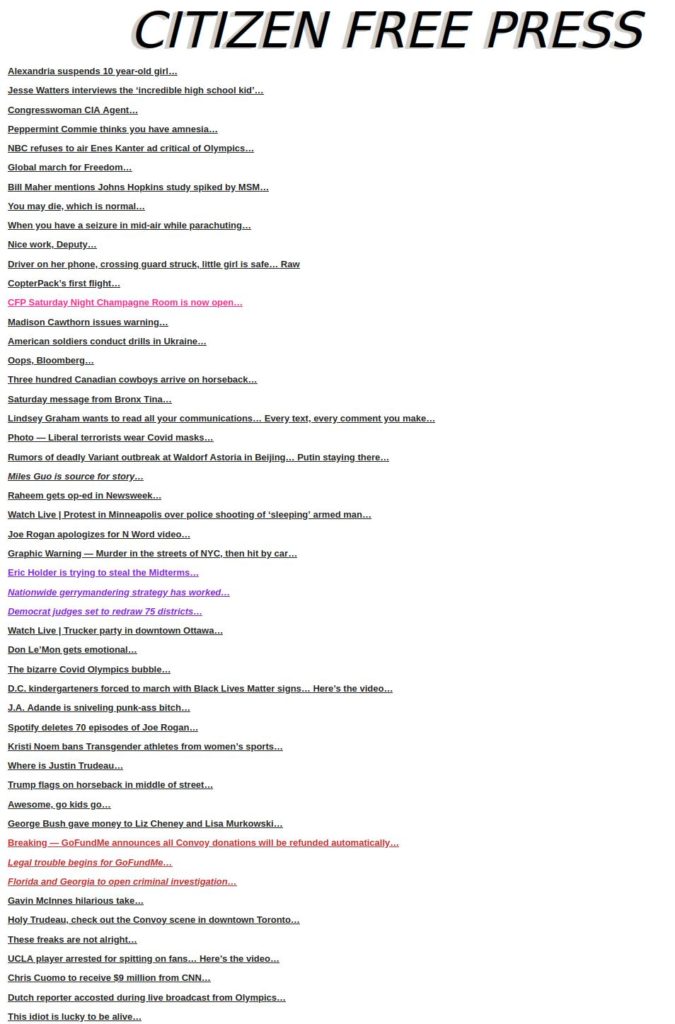
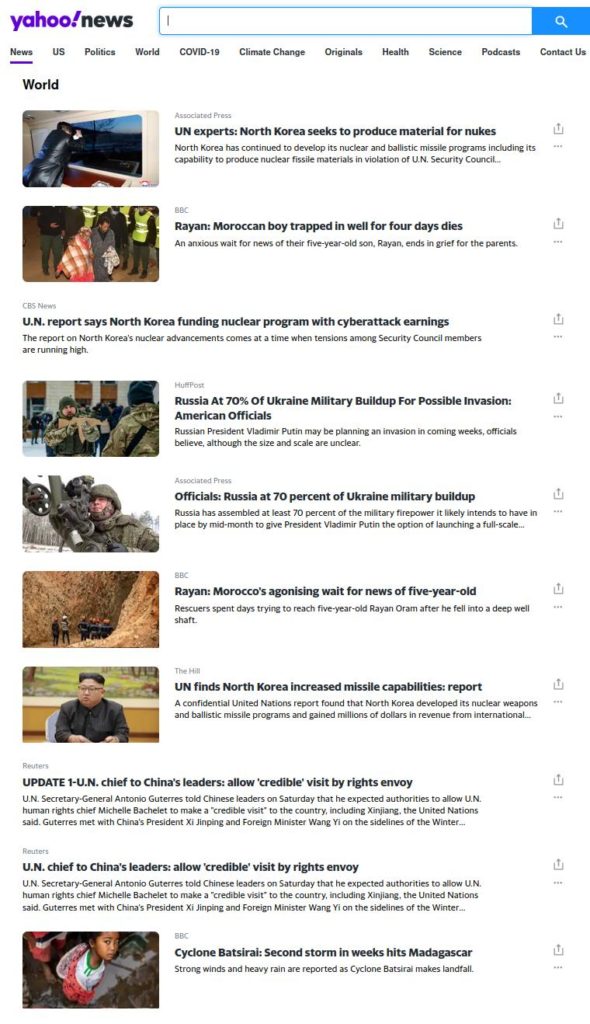



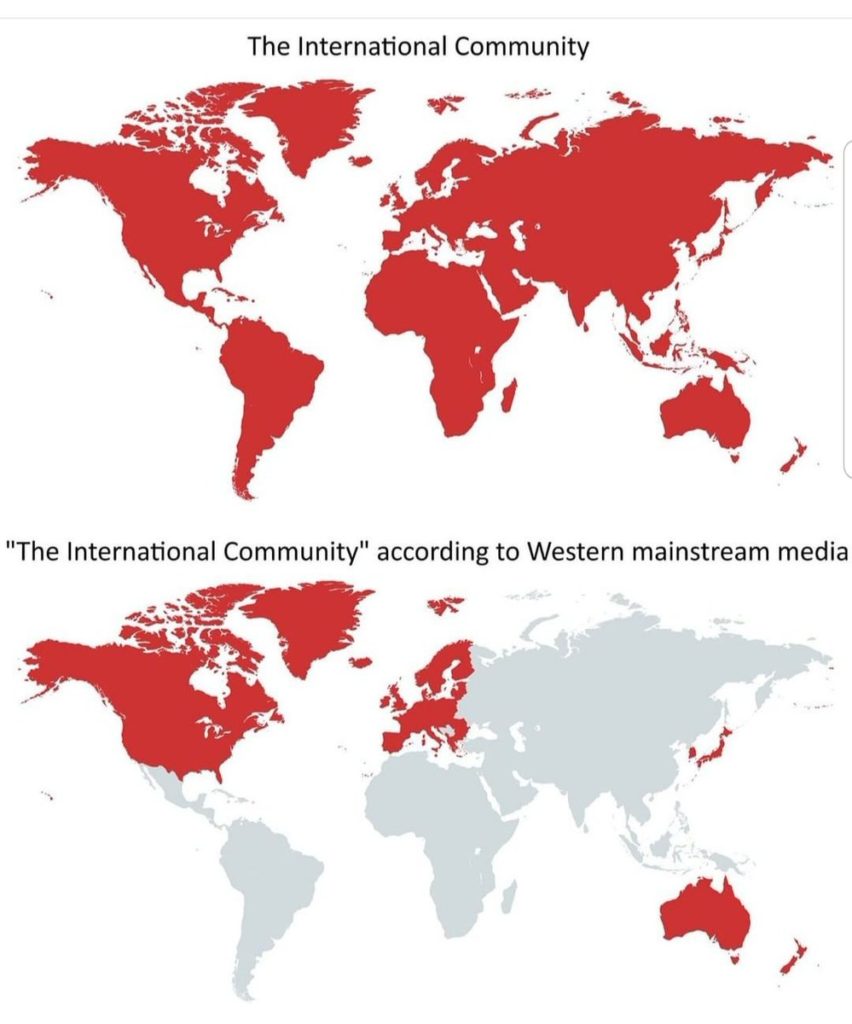
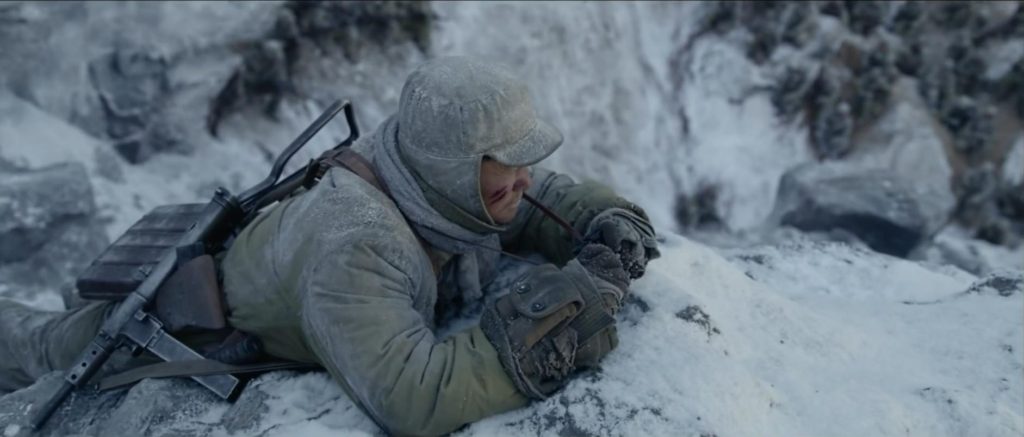

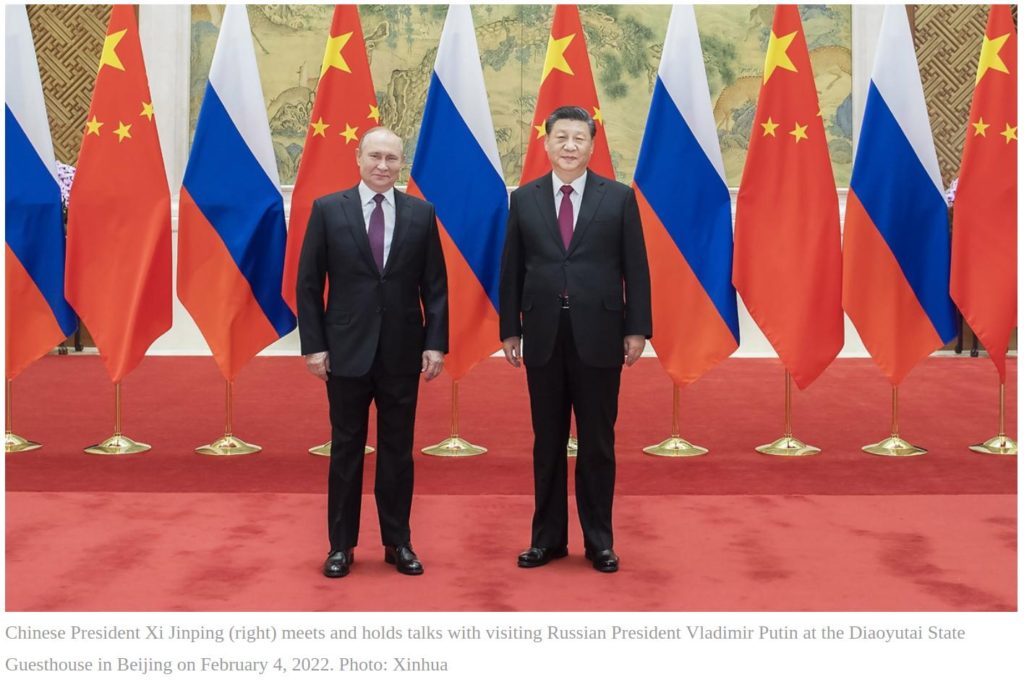
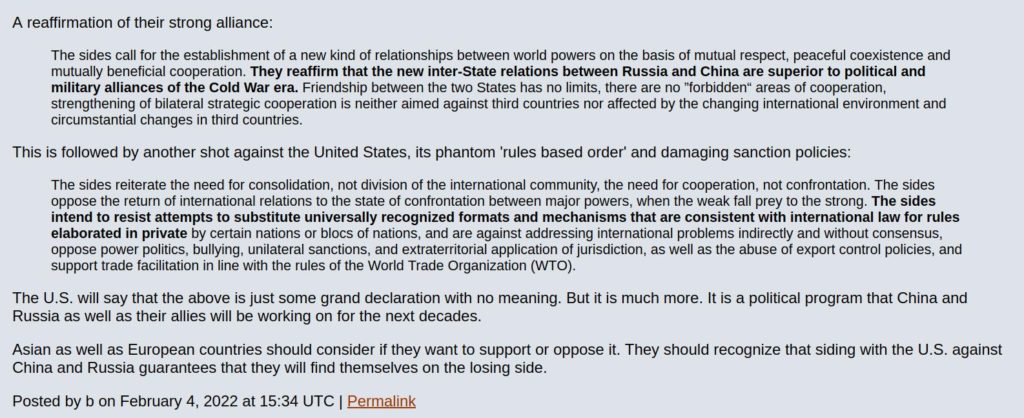





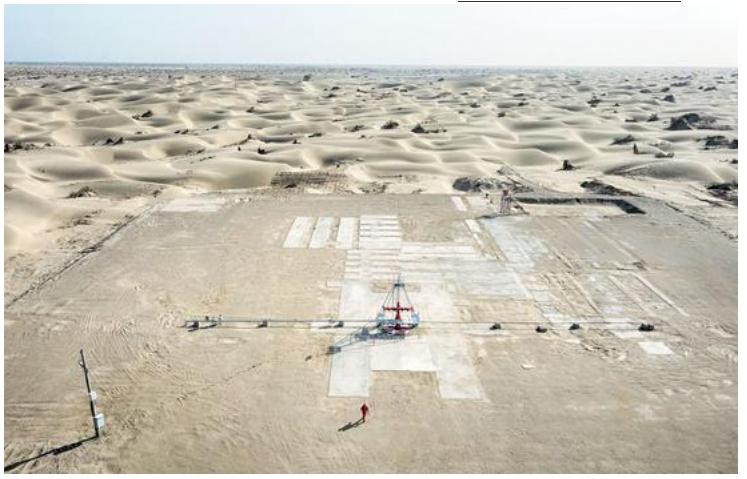

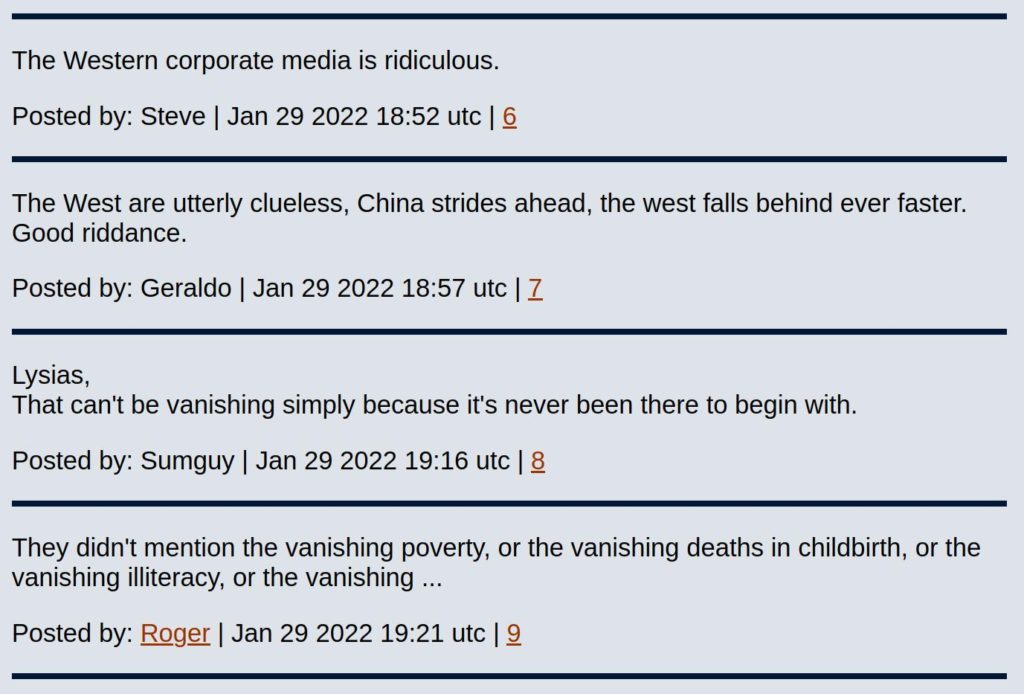
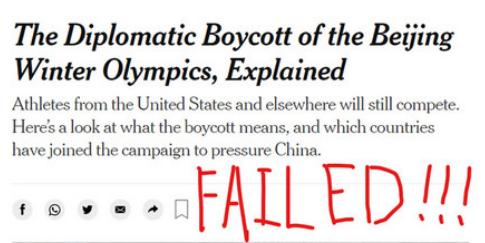
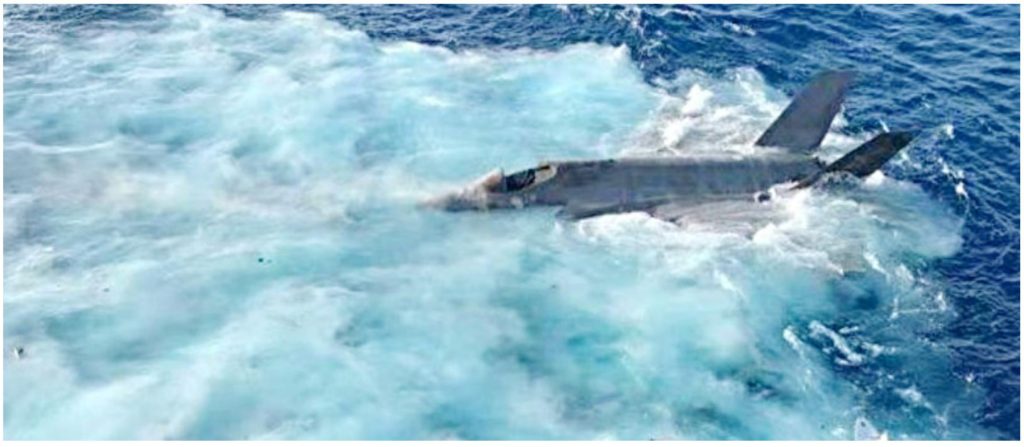
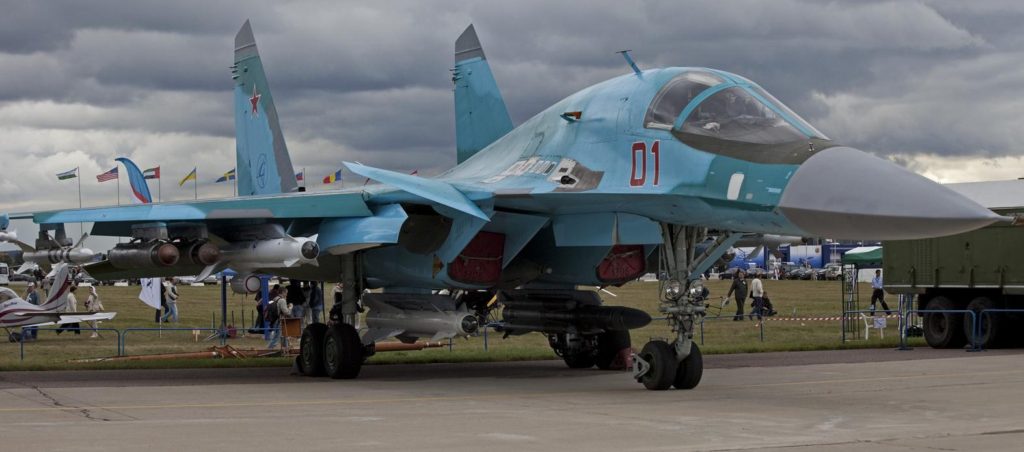
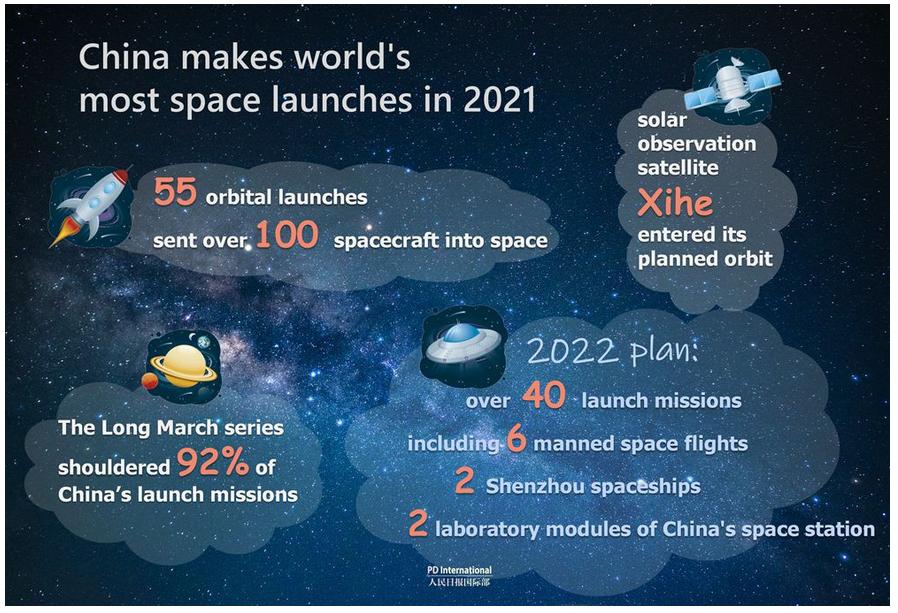
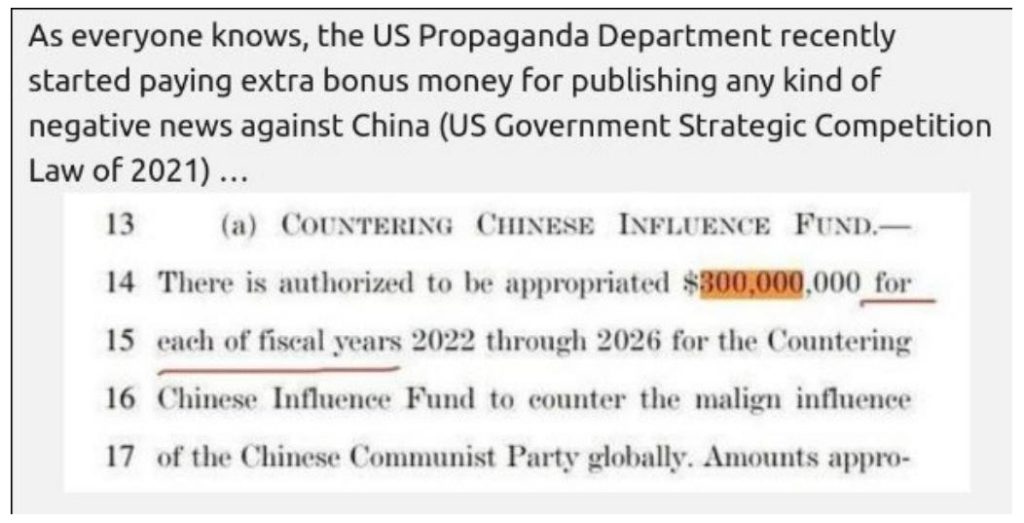
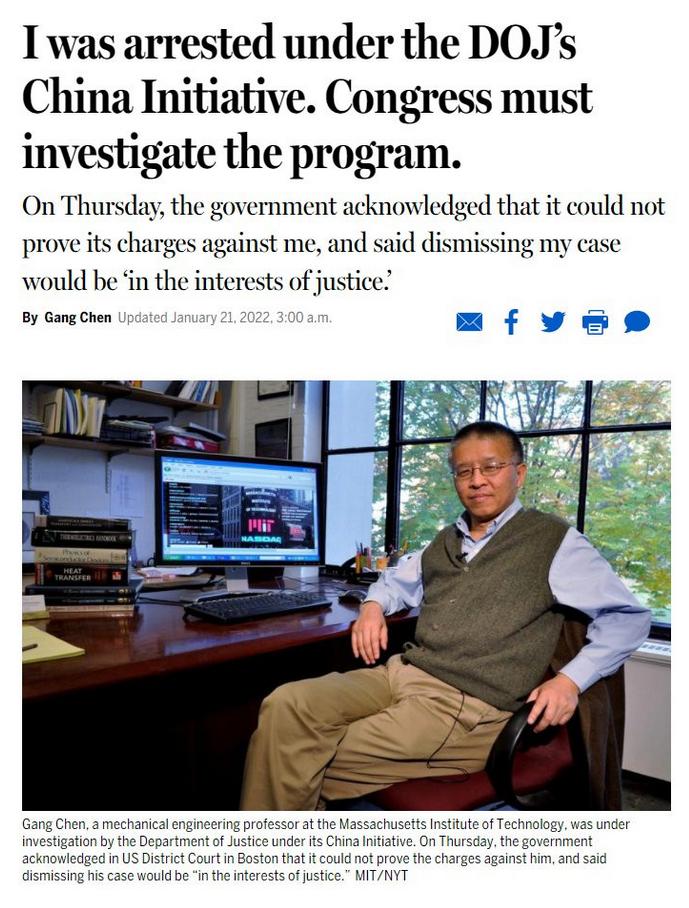


In an interview, Putin said once:
This was something learned, he told, from his experience in the streets of Leningrad.
I am afraid he might be soon forced to apply this precept. I hope some sense prevails in the minds of US and NATO leaders and, if not publicly, at least behind doors, they keep trying to address Russia’s concerns.